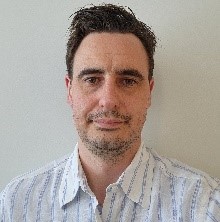Samuel Rowbotham, Ph.D.
Instructor
Massachusetts General Hospital

Instructor
Massachusetts General Hospital
Key Words: Lung stem cells, Congenital diaphragmatic hernia, epigenetics, Mouse models, Patient derived-tracheal aspirate cells
Fully functioning lungs are essential for human life and newborn infants must quickly transition from receiving oxygenated blood from their mother to breathing air after birth. To survive this transition, the lungs must be developed enough to have adequate surface area and volume for gas exchange. Because this is essential, underdeveloped lungs (referred to medically as pulmonary hypoplasia) is among the leading causes of death of newborn infants. One lung disease where this occurs and which we know can be caused by mutations in genes is congenital diaphragmatic hernia (CDH). In this disease, both a hole in the diaphragm and lung-intrinsic problems prevent the lungs from growing properly. The hernia can be repaired but the underdeveloped lungs remain, with few ways to treat them.
Interestingly, some of the genes which are mutated in CDH are active in very important cells referred to as stem cells. In fetal development and after birth, specialized lung stem cells are responsible for creating and maintaining new lung tissue, allowing lungs to grow and mature. In this project we will study these genes and test how they work in lung stem cells. We will use mice where we can delete these genes just in certain cells in the lungs, as well as lung stem cells that have been derived from CDH patients and those without lung disease. By learning why these genes are needed by lung stem cells and what they do, we can go on to design and test new treatments that will stimulate the stem cells of underdeveloped lungs to grow and mature them. This will be applied not only to CDH patients, but many more infants with underdeveloped lungs, possibly even those that are healthy but born prematurely. This would have a wide impact on many infants and children suffering from poorly developed lungs.